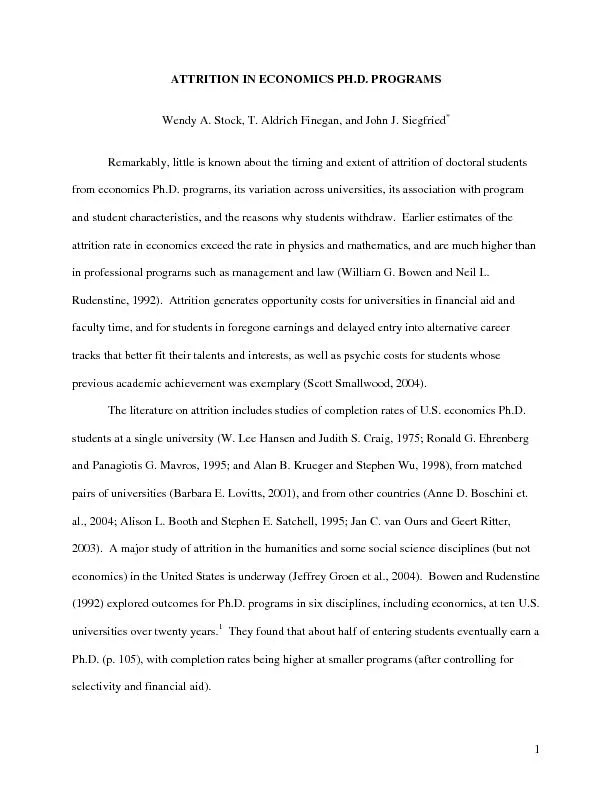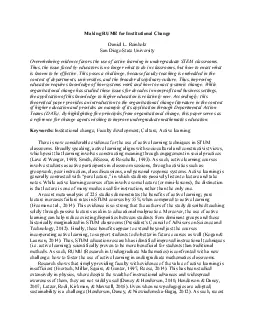PDF-In spite of these efforts, there has been little systematic analysis o
Author : cheryl-pisano | Published Date : 2016-05-12
I Data Sources and Variables In 200304 we collected baseline programlevel attrition information from department representatives 2 at 27 US economics PhD programs
Presentation Embed Code
Download Presentation
Download Presentation The PPT/PDF document "In spite of these efforts, there has bee..." is the property of its rightful owner. Permission is granted to download and print the materials on this website for personal, non-commercial use only, and to display it on your personal computer provided you do not modify the materials and that you retain all copyright notices contained in the materials. By downloading content from our website, you accept the terms of this agreement.
In spite of these efforts, there has been little systematic analysis o: Transcript
Download Rules Of Document
"In spite of these efforts, there has been little systematic analysis o"The content belongs to its owner. You may download and print it for personal use, without modification, and keep all copyright notices. By downloading, you agree to these terms.
Related Documents














